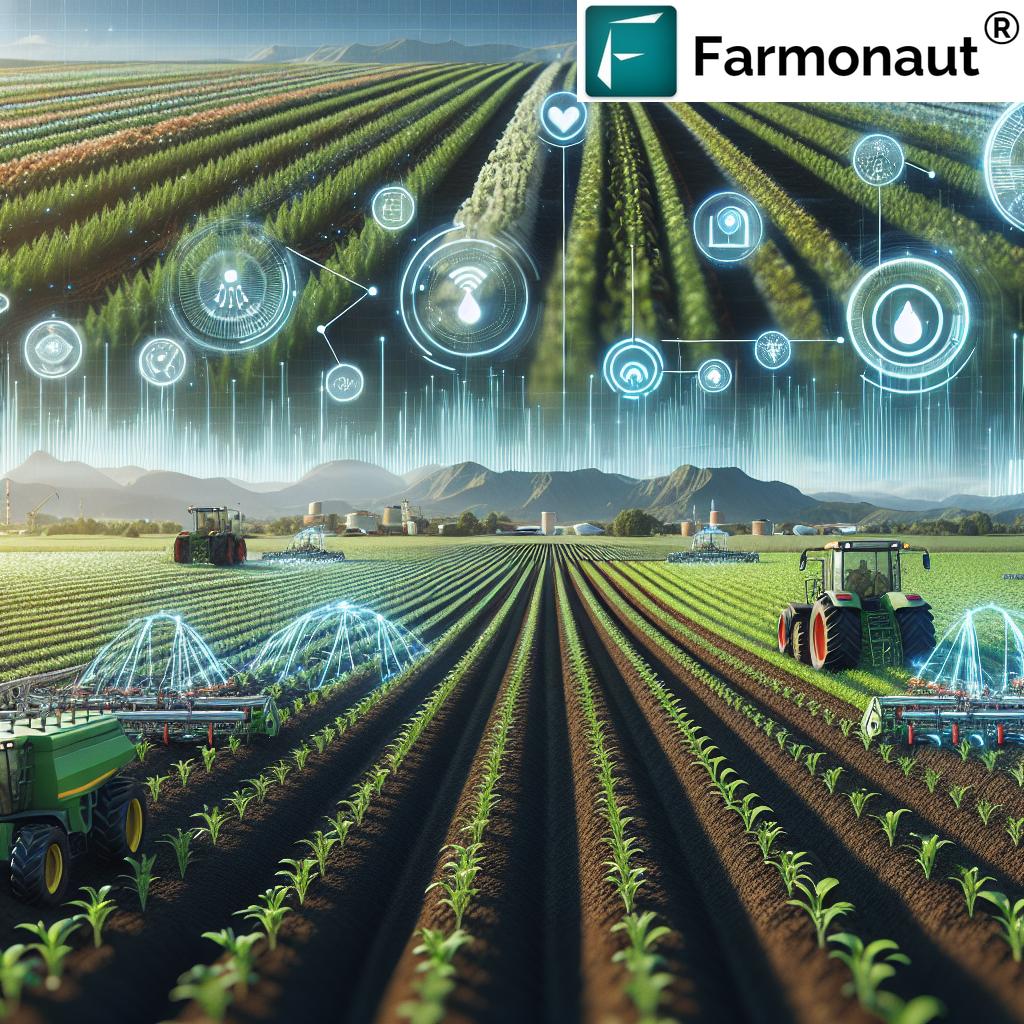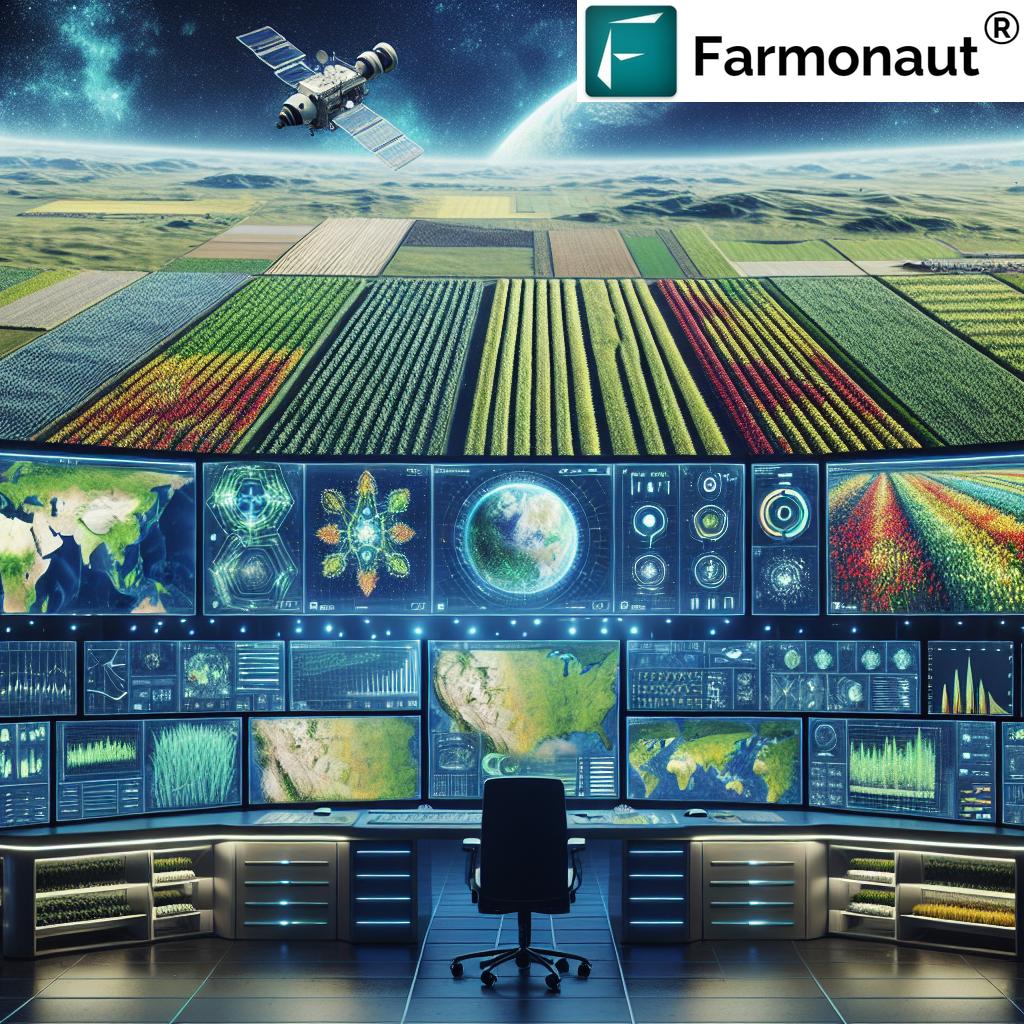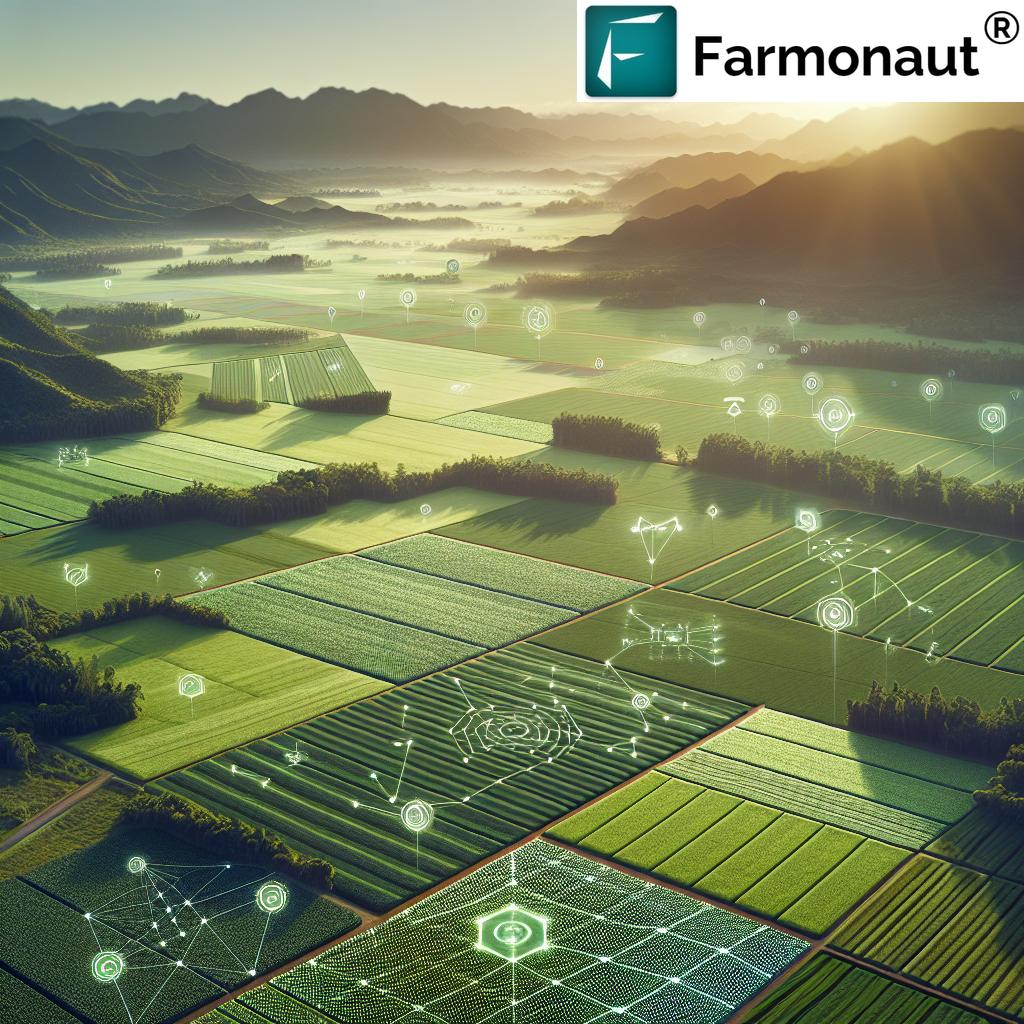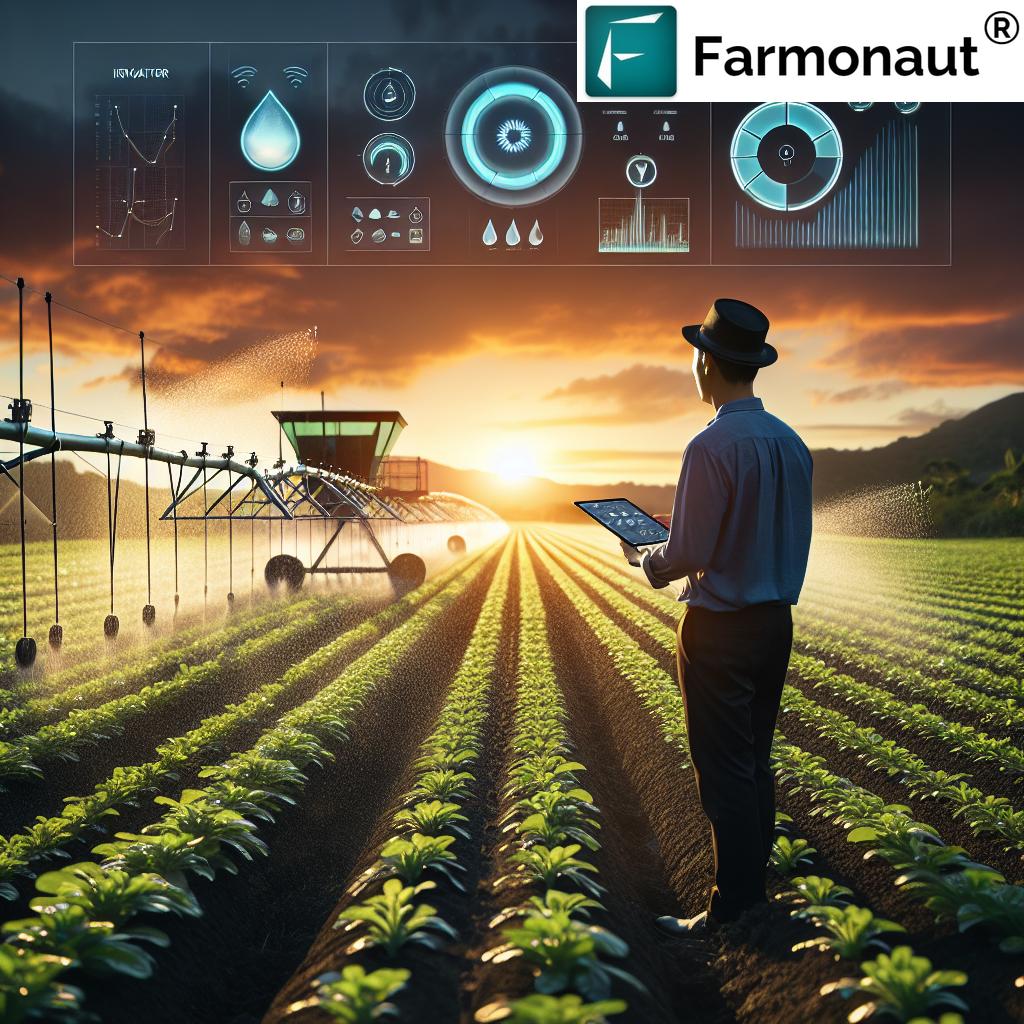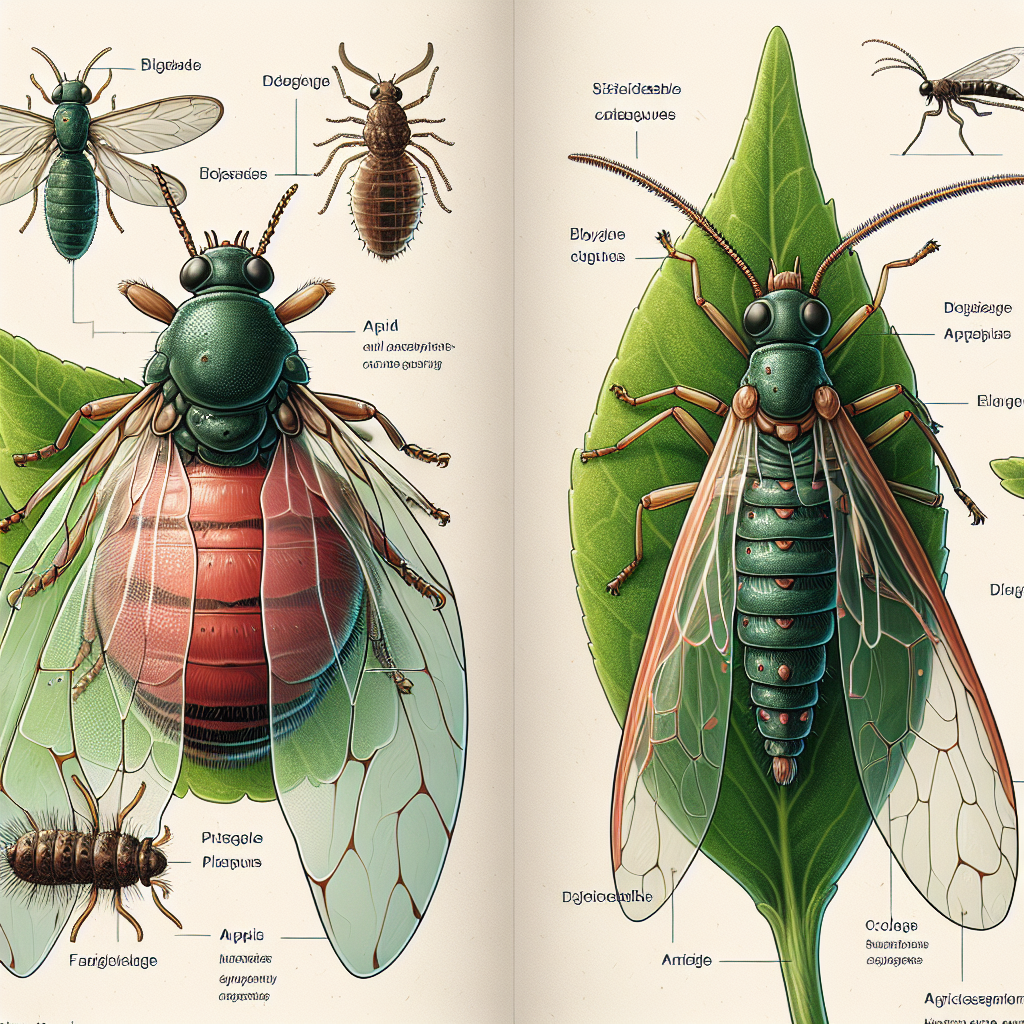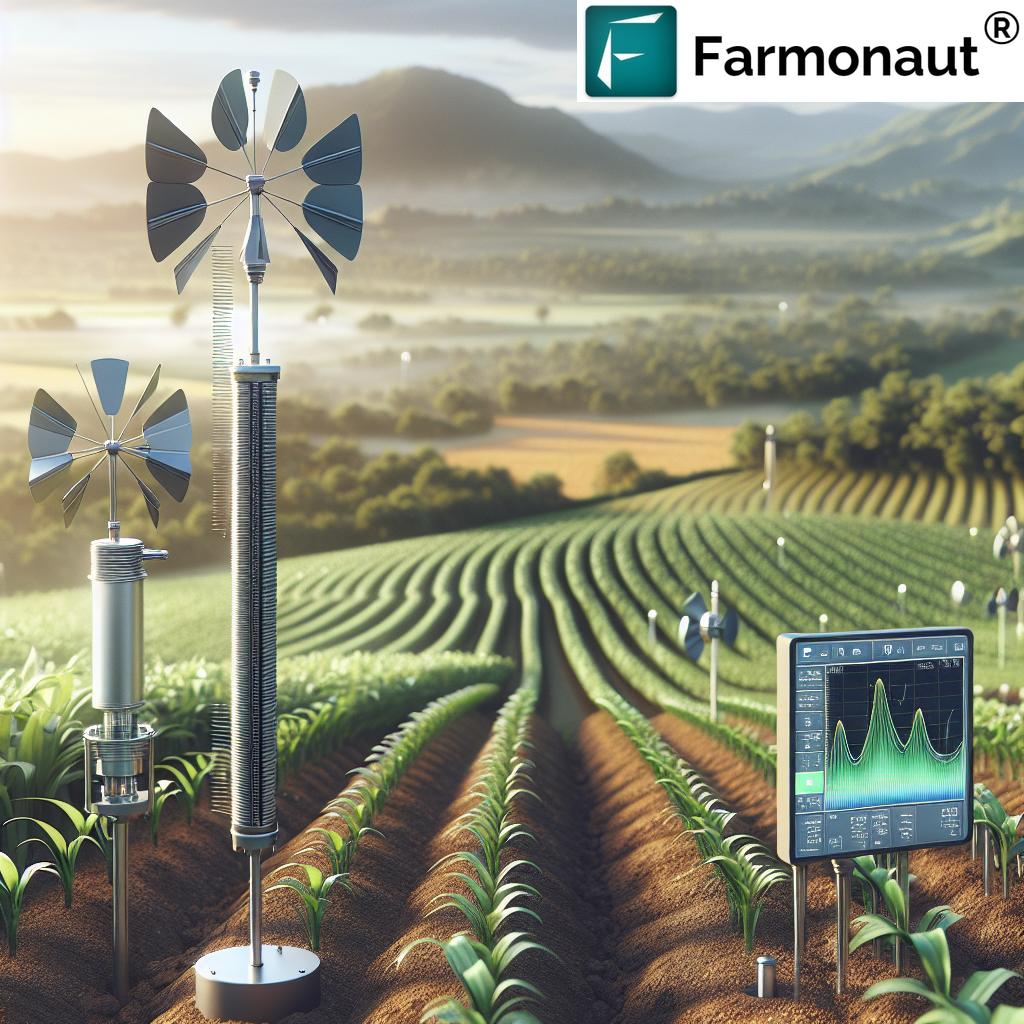AI Plant Identifier & Weed Apps: 2025 Anti-Desertification
Meta Description: AI plant identification, weed detection, and disease diagnosis apps are revolutionizing agriculture and environmental management in 2025, enabling sustainable practices and combating desertification.
- Introduction: AI’s Impact on Agriculture & The Fight Against Desertification
- Trivia: AI’s Astonishing Capabilities in 2025
- How AI Plant Identification is Reshaping Agriculture
- Transforming Land Management: Apps for Weed Identification
- AI Plant Disease Identifier: Diagnosis for Sustainable Crop Production
- Anti-Desertification: AI’s Role in Combatting Land Degradation
- Feature Comparison Table: AI Apps in Sustainable Agriculture
- Farmonaut’s Satellite & AI Solutions for Agriculture and Restoration
- Trivia: AI Weed Detection & Land Management
- The Future: 2025 and Beyond – Evolving Landscapes with AI and Smart Apps
- FAQ: AI Plant Identifier Apps & Anti-Desertification
- Conclusion
“Over 80% of plant species can now be identified instantly using AI-powered plant identification apps in 2025.”
Introduction: AI’s Impact on Agriculture & The Fight Against Desertification
In recent years, revolutionary advancements in artificial intelligence (AI) have redefined multiple sectors, but perhaps nowhere is this more evident than in the fields of agriculture and environmental management. In 2025, the deployment of AI-powered plant identification, apps for weed identification, and ai plant disease identifier technologies is fundamentally transforming how we manage and restore land, secure our food supply, and battle the looming threat of anti desertification. This article explores the advanced applications, critical tools, algorithms, and real-world usages of AI systems in reshaping farming, promoting sustainability, and protecting biodiversity as we adapt to the challenges of climate change.
The integration of ai plant identification and related apps has become indispensable for farmers, forestry professionals, and land managers worldwide. Through deep learning, machine learning, and computer vision, these tools now enable instant, accurate identification of plant and weed species, early disease detection, and insightful diagnostic measures that support sustainable management practices and large-scale restoration of degraded land.
How AI Plant Identification is Reshaping Agriculture
The concept of ai plant identification is no longer futuristic; it is a practical reality that is being rapidly adopted. AI plant identifier apps, powered by neural networks trained on millions of plant images, enable rapid and precise identification of plants from a smartphone camera. Whether surveying vast agricultural fields or biodiverse forest landscapes, farmers and agronomists can now recognize crops, native species, and invasive flora within seconds, reducing guesswork and supporting evidence-based decision making.
Key benefits of AI plant identification applications include:
- Instant, accurate species identification for field management and biodiversity initiatives
- Empowerment of non-experts (e.g., smallholder farmers) with accessible diagnostic capabilities
- Biodiversity preservation by helping to monitor and protect native and endangered flora
- Enhanced crop management through rapid rotation planning and invasive species detection
- Integration with other data sources, such as blockchain-based traceability (see Farmonaut Product Traceability solutions), for end-to-end resource management
How does it work? These apps utilize the power of deep learning algorithms, which are trained on millions of images encompassing a wide spectrum of plant species, leaf shapes, and color patterns. The AI analyzes a photo taken via a smartphone camera, compares features such as leaf venation, size, and hue, and instantly provides not only the species name, but also information about its ecological role, growth habits, and potential management needs.
Such rapid identification aids enormously in managing crop rotations, planning restoration, or addressing the presence of invasive weeds, thus supporting both yields and sustainable practices. For large-scale operations and ecological restoration projects, AI plant identifiers deliver scale and precision unattainable by manual methods.
Example platform: The Farmonaut Large Scale Farm Management App empowers users to digitally manage crop species, monitor field conditions via satellite, and optimize agricultural output using in-built AI advisories and plant identification.
AI Plant Identifier Apps: Key Capabilities in 2025
- Visual analysis of leaf shape, color, and patterns to differentiate similar species
- Support for multi-crop environments including complex agroforestry systems
- Integration with soil and climate databases to suggest optimal crops or restoration species (see Farmonaut’s soil monitoring and carbon footprinting solutions)
- Cloud-based learning algorithms—apps continually improve their accuracy as global users upload new images and field notes
With the widespread use of AI plant identifier tools, achieving food security and ecological sustainability in a changing climate has become more attainable. Users are empowered to make quick, informed choices, reducing resource wastage and promoting resilient agricultural landscapes.
Transforming Land Management: Apps for Weed Identification in 2025
Traditional weed control methods such as manual scouting or blanket herbicide spraying not only have high costs but also carry a risk of environmental damage and herbicide resistance. The new era of apps for weed identification, fueled by AI and image analysis, is enabling farmers and land managers to target weed species with unmatched precision.
By leveraging deep learning and large plant image datasets, these apps can analyze leaf shape, color, and growth habits—even distinguishing weeds from crops at early growth stages. The result? Timely intervention and reduced chemical input, supporting eco-friendly management practices that enhance both productivity and sustainability.
- Precision weed targeting: Spot-treat or mechanically remove only areas where invasive species are present, reducing blanket applications.
- Scalable early-warning: Apps are proven to be indispensable for both smallholder plots and vast commercial fields, providing alerts before weeds compete for resources.
- Higher yield potential: Preventing weed competition early boosts yields while minimizing pesticide and herbicide overuse.
- Sustainability metrics: Combined with carbon footprint monitoring solutions such as those from Farmonaut, users can even measure their positive impact on the land.
How do these AI weed identifiers work? Users simply upload photos of suspicious plants growing among their crops; AI systems compare the leaf morphology, color, and patterns with reference data, and identify the weed species, often providing optimal removal or control suggestions.
Example use case: Monitoring agroforestry restoration areas for invasive species and scheduling timely mechanical or targeted chemical removal, reducing costs and environmental impact while supporting biodiversity preservation.
For integrated weed and resource management, platforms such as Farmonaut’s fleet management options enable users to coordinate the precise deployment of machinery (e.g., for spot spraying or mechanical removal), optimize fuel usage, minimize operator exposure, and further reduce operational costs.
This combination of algorithms, remote sensing, and machine learning is quickly shaping up to be one of the most impactful uses of AI in agriculture and anti-desertification efforts.
Major Benefits of Weed Identification Apps in Land Restoration
- Real-time mapping and suppression of invasive weeds in ecological restoration projects
- Protecting endangered native flora by dynamically identifying and targeting competitive invasive species
- Reduced herbicide use supports pollinators and enhances overall land biodiversity and health
AI Plant Disease Identifier: Diagnosis for Sustainable Crop Production
Crop diseases cost global agriculture billions in losses every year. Early and precise disease detection is critical to minimize yield loss and secure our food supply. The next generation of ai plant disease identifier applications combines computer vision, deep learning, and environmental data to deliver instant, field-ready diagnosis.
Here’s how these AI-powered disease diagnosis apps work:
- Image analysis: Users snap images of leaves or plant parts showing symptoms. The AI analyzes the leaf and compares features—spots, discoloration, wilting, or deformation—against a database of diseases.
- Data layering: Many platforms integrate soil, moisture, and climate data from satellite and IoT sensors, providing context-aware risk assessments.
- Actionable advisories: Recommendations may include safe pesticide or biological treatment, changes in irrigation, or resistant variety suggestions.
Such apps not only detect but also help prevent outbreaks when combined with real-time monitoring and forecast tools. For instance, satellite imagery and environmental models can predict the spread of fungal or viral diseases based on weather patterns. This allows farmers to take preemptive measures, reducing both the intensity of interventions and reliance on chemicals.
Platforms such as Farmonaut’s crop loan and insurance verification solutions leverage AI-based plant disease diagnosis, enabling financial institutions to make informed lending decisions based on satellite-monitored field health.
Key Outcomes with AI Disease Diagnosis Apps
- Early intervention reduces crop loss and pesticide overuse
- Accessible diagnosis for smallholders without plant pathology experts
- Improved yield and land productivity, essential for food security
- Lower chemical footprint, supporting sustainable ecosystems
Anti-Desertification: AI’s Role in Combatting Land Degradation
Desertification—the process wherein fertile land becomes barren—poses an increasing threat to global food production, water security, and climate stability. Unsustainable agricultural practices, overgrazing, and climate change all contribute to the loss of productive soils and ecosystem resilience.
In 2025, AI technologies have become central to anti desertification strategies at both local and regional scales:
- Degradation mapping: Using satellite imagery analyzed by machine learning, AI highlights vulnerable regions and tracks changing landscapes over time.
- Vegetation and soil health monitoring: Multispectral imagery and AI algorithms assess plant growth, canopy cover, and soil conditions for early signs of degradation.
- Restoration project planning: AI selects optimal plant species mixes for reforestation, based on local climate and soil predictions to improve restoration success rates.
- Impact assessment: Ongoing monitoring quantifies restored hectares, change in carbon sequestration, and biodiversity metrics.
To explore how satellite and AI-driven insights support anti-desertification:
These technologies are crucial for sustainable agricultural productivity—by enabling the restoration of arid and semi-arid lands, promoting resilient landscapes, and enhancing carbon captures for climate change mitigation. Farmonaut’s carbon footprinting tools provide environmental impact monitoring, offering governments and businesses data-driven recommendations for restoration and sustainable agriculture.
AI Innovations in Land Restoration and Monitoring
- Automated satellite scans for vegetation cover and erosion risk assessment
- AI-powered prescription maps to guide planting and water conservation efforts
- Blockchain traceability integration for transparent restoration and resource allocation: see Farmonaut’s traceability solutions
- Scalable monitoring and reporting via Android, iOS, or browser interfaces
“AI weed detection apps have reduced manual weed scouting time by up to 70% in sustainable land management projects.”
Feature Comparison Table: AI Apps in Sustainable Agriculture
A side-by-side comparison reveals the distinctive features and impacts of leading AI apps in plant identification, weed detection, and disease diagnosis for anti desertification and sustainable agriculture.
| App Name | Primary Function | AI Technology Used | Estimated Accuracy Rate (%) | User Base (2025) | Impact on Land Restoration (Hectares Monitored/Restored) | Platform Availability | Sustainable Agriculture Features |
|---|---|---|---|---|---|---|---|
| Farmonaut | Identification, Weed Detection, Disease Diagnosis, Satellite Monitoring | Deep Learning, Computer Vision, Blockchain | 92-98% | 750K+ users | 24M+ hectares | Android, iOS, Web, API |
|
| PlantNet | Identification | Deep Learning | 85-95% | 3M+ users | 500K+ | Android, iOS, Web |
|
| PictureThis | Identification | Computer Vision | 88-95% | 10M+ users | <100K | Android, iOS |
|
| Plantix | Weed Detection, Disease Diagnosis | Machine Learning | 80-90% | 8M+ users | 3.5M+ | Android, iOS |
|
| Agremo | Disease Diagnosis, Monitoring | AI, Computer Vision | 85-98% | 200K+ | 2M+ | Web |
|
These metrics are based on 2025 industry estimates and reported figures where available. Farmonaut stands out with strong coverage in satellite-driven restoration, real-time land monitoring, and a comprehensive feature set designed for sustainable agriculture.
Farmonaut’s Satellite & AI Solutions for Agriculture and Restoration
At Farmonaut, we are dedicated to advancing global agriculture, environmental monitoring, and sustainable land management through our state-of-the-art satellite and AI platform. By utilizing advanced multispectral satellite imagery, deep learning algorithms, and data integrations, we empower users—from individual farmers to government agencies—to:
- Detect and identify plant, weed, and disease threats in real time across vast, diverse geographies
- Monitor soil, crop, and environmental conditions, supporting responsive and sustainable management
- Plan and assess restoration projects for anti-desertification efforts through dynamic, ongoing land tracking
- Enable blockchain-based traceability for transparency across agricultural and environmental supply chains (learn more about our traceability solutions)
- Reduce operational costs and enhance productivity with powerful resource and fleet management tools (explore fleet management features)
Our platform operates via Android, iOS, web, and a robust API. We provide scalable solutions for farm management, satellite-based verification for crop loans and insurance (see details), and environmental compliance (via Farmonaut Carbon Footprinting).
Our mission is clear: to make satellite-driven insights, AI-plant identification, and comprehensive land monitoring affordable and accessible, enabling sustainable agriculture and environmental restoration projects globally.
Want to integrate advanced AI plant identification and satellite monitoring into your proprietary systems? Explore our API here and check the Developer Docs.
The Future: 2025 and Beyond – Evolving Landscapes with AI and Smart Apps
The rapid integration of AI plant identification, weed and disease detection, and anti desertification tools is ushering in a new era for agriculture and environmental stewardship. These applications not only improve productivity but also redefine our relationship with land, enabling decision makers to better meet the challenges of food security and climate change head-on.
- Scalable restoration: Ongoing AI-powered monitoring of millions of hectares ensures that restoration and anti-desertification efforts are data-driven and adaptive.
- Biodiversity and flora preservation: Every field visit and every user photo fuels AI models to better recognize, protect, and restore endangered species and habitats.
- Productivity and resilience: Farms become more resilient to climate shocks and market volatility, aided by early-warning and adaptive management systems.
- Transparent ecosystems: With blockchain-enabled traceability (see Farmonaut Traceability), stakeholders have clarity and confidence in the authenticity and sustainability of agri-products and ecosystem services.
- Sustainable food systems: Nutritional security, environmental health, and economic viability are supported hand in hand.
With AI as an indispensable ally, we are now better equipped than ever to manage and heal the land—restoring productivity, securing food for future generations, and creating ecological systems capable of withstanding the uncertainties of a changing climate.
FAQ: AI Plant Identifier Apps & Anti-Desertification
-
What is an AI plant identifier and how accurate are these apps in 2025?
AI plant identifier apps are smartphone or web tools that use artificial intelligence and image recognition to determine plant species from photos of leaves, flowers, or stems. In 2025, these algorithms can accurately identify 80-98% of known plant species depending on image quality and database coverage. -
Can AI plant identification apps help with weed management?
Absolutely. Modern apps for weed identification can distinguish between crop and weed seedlings, recommend precision control methods, and dramatically reduce the need for blanket herbicide application, lowering costs and ecological impact. -
How do AI-powered disease identifier tools work?
They analyze images of symptomatic plant tissue (e.g., leaves) to spot visual patterns associated with disease, referencing vast global databases. Many integrate climatic and soil data to offer precise, actionable recommendations or preventive alerts. -
What’s the connection between AI apps and anti-desertification?
AI applications help locate, monitor, and prioritize land restoration projects; select optimal reforestation species; and assess intervention effectiveness using continual satellite monitoring, all of which are vital for anti-desertification programs. -
How can farmers benefit on a small scale?
Even individual or smallholder farmers can access instant diagnoses, monitoring, and advisories—turning every smartphone into a powerful agricultural tool! -
How do I get started with Farmonaut’s AI-enabled solutions?
Visit Farmonaut’s application portal or try the apps via Android or iOS. Developers and businesses may also access the Farmonaut API for customized integrations.
Conclusion
By 2025, the synergy of AI plant identification, disease and weed detectors, and anti-desertification technologies has forever redefined the future of agriculture and land management. These innovations—grounded in deep learning, environmental monitoring, and real-time user input—not only empower farmers and land managers but serve as vital tools combating the dual crises of food insecurity and ecosystem degradation.
As we navigate the complexities of a changing world, integrating these intelligent, accessible, and scalable systems remains critical. Whether for instant species identification, sustainable weed control, precise disease diagnosis, or large-scale restoration and biodiversity conservation, embracing AI is essential for safeguarding our planet’s productivity and resilience.
Ready to explore the future of sustainable agriculture and restoration? Get started with Farmonaut’s AI-powered apps or explore their advanced API and data-driven tools today.
Together, we can build a greener, more productive, and resilient agricultural world through the power of AI and smart apps.




